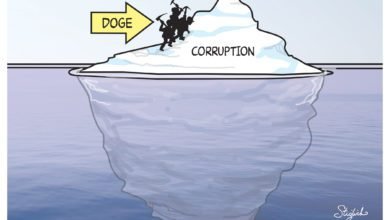Donald Trump’s Plan for Economic Salvation
Repudiation and Reversal
One of the unspoken joys in life is the rich pleasure that comes with bearing witness to a career politician – a shrew no less – as they fail spectacularly. Tuesday night served up one of these unique experiences with some sumptuous fare. No doubt, the world is a better place because of it.
Make of it what you will. Donald Trump’s upset over Hillary Clinton is a repudiation of the entire Washington status quo. This is something to celebrate, whether you like Trump or not.
There is an abundance of dime a dozen political pundits, all who are way more qualified than we are, working overtime to slice, dice, and pontificate on the outcome. We’ll leave further interpretations and opinions up to them. Instead, we’ll return to where we left off last week.
If you recall, we mentioned the possible commencement of a reversal in the long-term credit market cycle. Namely, that since bottoming out in July the yield on the 10-Year Treasury note has been rising. We don’t know if it will last or not.
Like a Presidential Election upset, these broad trend reversals are only recognizable in hindsight. Graphs, charts, and inferences are only predictive until they’re not. Thus we observe daily yield changes with a watchful eye.
Something Remarkable
Over the last 8 years – or longer – it has appeared on numerous occasions that credit markets were returning to a long-term interest rate uptrend. Yet each time it has merely been a brief up zig followed by a much longer down zag. In fact, as the years have passed, things have become ever more absurd.
Yields for some sovereign bonds – like some Japanese bonds – have even dipped below zero, if you can believe it. So far in the United States, we’ve been able to avoid the black hole of negative rates. With a little luck, we’ll be able to avoid them indefinitely.
This week the momentous Trump victory obscured something remarkable. On Wednesday, while many were fixated on the 800 point drop in the DOW futures, followed by an actual 256 point boost during the trading day, something even more extreme was taking place. Treasury yields, as measured by the 10-Year Treasury note, spiked up over 11 percent to 2.07 percent.
On Thursday, stocks jumped again – and so did Treasury yields. What in the world could possibly be going on?
According to Reuters, “speculation in markets that Trump would enact protectionist trade policies and put upward pressure on U.S. wages and boost inflation helped lift U.S. bond yields.”
Perhaps, too, traders are front-running Trump’s promise to borrow gobs of money – increase the budget deficit – to build a giant wall along the nation’s southern border. This would increase the supply of Treasuries and likely push up yields. It may also push up concrete, steel, and other commodity prices.
Donald Trump’s Plan for Economic Salvation
Of course, borrowing money and spending it on infrastructure building may give the economy a temporary boost. Certainly, it would put some people back to work. But does it really solve anything?
The economy’s already oversaturated with debt. No economic stimulus will compel the economy to grow its way out of debt. It’s not physically or mathematically possible.
Unfortunately, these trends are bigger than Trump. They were set into motion many decades ago by shortsighted politicians. Adding new debt based stimulus only digs a deeper hole.
For example, increasing deficits further widens the overall divergence between debt and GDP. Specifically, debt grows larger while GDP slouched forward. On top of that, larger deficits could ignite a level of consumer price inflation that hasn’t dramatically flared up since the early 1980s.
Indeed, Trump appears eager to double down on the mistakes of the past. And why shouldn’t he? At this point, there’s no turning back anyway. So why fight it? Why resist it?
What the heck. We’ll even endorse it and offer some unsolicited advice. Donald Trump and the Republican Congress should go big and go all-in. Slam the peddle to the meddle and gun the economy right off the cliff.
It’ll be one helluva ride…and with a little luck there’ll be salvation waiting on the other side.




